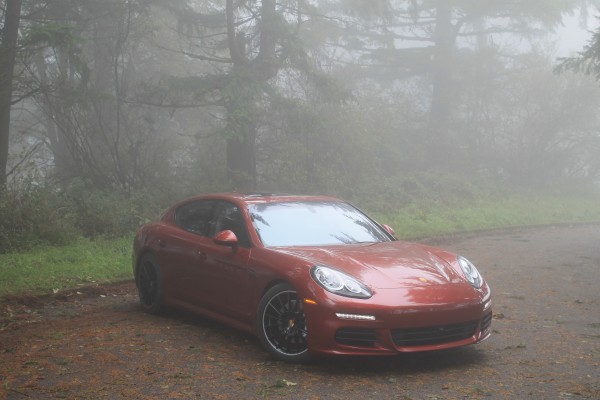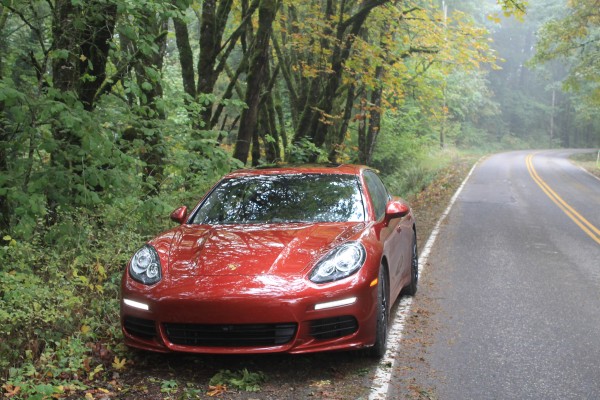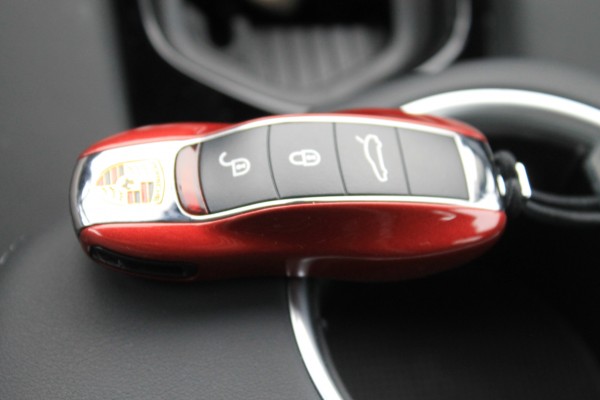To provide a good bookend for my time with the Panamera lineup, I decided to end the trip with the two-wheel-drive version of the car I drove first, the Panamera S. After a palette cleansing dinner, wine tasting, and an adequate amount of sleep, I woke up with a fresh perspective, and I am glad that I saved this one for last, because it surprised me. As disappointed as I was when I first drove the Panamera 4S, that is how surprised I was when I slipped behind the tiller of the non-4 ‘S’.
Interestingly, the 4S I drove on Tuesday and the S I drove on Wednesday were configured with the exact same options, with the exception of the exterior paint color (and both the Chestnut Brown of the 4S and the Ruby Red of the S are beautiful choices). Before stepping into the car, I knew not to even bother with the infuriatingly reigned in standard driving mode, and clicked the “Sport+” button before even leaving the parking lot. Really, Sport+ is so good that it should be the standard mode for this car.
Again, the lag of the turbocharged V6 was a bit unnerving at first, but became very easy to become accustomed to. The off-boost torque is not substantial, but it is pretty easy to keep the turbos spooled with judicious application of throttle. The part that was different, though, was how much more fun it is to drive. If the 4S is a 7, the S is definitely a 9. Running through the hills in the S is a lesson in how Porsche’s engineers make a Panamera feel half as small as it is.
The PCCB brakes that are optional on this car are, admittedly, spectacular, though wholly unnecessary. This Panamera S was equipped with the standard Silver caliper steel rotor braking system (caliper color legend: base – black, S – silver, GTS and Turbo – Red, PCCB – Yellow, e-hybrid – Acid Green) , and it was more than adequate. Poking around at tight hairpins, sweepers, and long straights for a couple hours gave the brakes plenty of time to show signs of fade, and none arrived. Surely if a car this heavy was subjected to lengthy track sessions the fade would rear its ugly head, wouldn’t it? However, for street driving and the occasional spirited Sunday drive, the standard fare is probably better than you will ever need.
The V6 turbo, when compared with the V8 S, weighs a similar amount, but moves the weight of the engine further back in the chassis with two cylinders cut off of the front. This helps tremendously with corner turn-in, steering wheel feedback, and even mutes the understeer nature of the car a little. All of these aspects are an improvement for sure, and make for a much more tossable feeling two ton sedan. I am convinced that the standard S, when equipped with Sport Package and SportDesign steering wheel, could almost be as good as a “GTS lite” version.
I have been a fan of turbocharged sports sedans for most of my adult life, and the Panamera S ‘turbo’ has reinforced this infatuation. Waiting on boost isn’t fun, but the shove in the pants you get when it comes on song is just addictive. Knowing, also, what the aftermarket can do with small bore turbocharged engines, this 3-liter could see double power in relatively short time. I, for one, look forward to seeing this new Porsche turbo engine in the Macan and possibly the Cayenne.
When I stepped out of the e-hybrid, I was wondering why anyone would buy the standard S over the hybrid, but after popping out of the S with a huge smile on my face, I find it hard to understand why anyone would buy any Panamera other than the new turbocharged S. The handling is second only to the GTS, but it is $20 thousand dollars less than the GTS. The power is excellent, not quite as nice as the 520 horsepower in the Turbo, but certainly more than enough. Of every car I drove over these two days, it is the bog standard Panamera S that I would most like to live with on day to day drives.
Other Porsche Blog Posts You Will Enjoy
Read our 2014 Porsche Panamera 4S Review
Read our 2014 Porsche Panamera S E-hybrid Review
Read our 2014 Porsche Panamera GTS Review
Read our 2014 Porsche Panamera Turbo Executive Review




